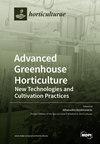Research on a Flower Recognition Method Based on Masked Autoencoders
IF 3.1
3区 农林科学
Q1 HORTICULTURE
引用次数: 0
Abstract
Accurate and efficient flower identification holds significant importance not only for the general public—who may use this information for educational, recreational, or conservation purposes—but also for professionals in fields such as botany, agriculture, and environmental science, where precise flower recognition can assist in biodiversity assessments, crop management, and ecological monitoring. In this study, we propose a novel flower recognition method utilizing a masked autoencoder, which leverages the power of self-supervised learning to enhance the model’s feature extraction capabilities, resulting in improved classification performance with an accuracy of 99.6% on the Oxford 102 Flowers dataset. Consequently, we have developed a large-scale masked autoencoder pre-training model specifically tailored for flower identification. This approach allows the model to learn robust and discriminative features from a vast amount of unlabeled flower images, thereby enhancing its generalization ability for flower classification tasks. Our method has been applied successfully to flower target detection, achieving a Mean Average Precision (mAP) of 71.3%. This result underscores the versatility and effectiveness of our approach across various flower-related tasks, including both detection and recognition. Simultaneously, we have developed a straightforward, user-friendly flower recognition and classification software application, which offers convenient and reliable references for flower education, teaching, dataset annotation, and other uses.基于掩码自动编码器的花朵识别方法研究
准确、高效的花卉识别不仅对普通大众具有重要意义(他们可能会将这些信息用于教育、娱乐或保护目的),而且对植物学、农业和环境科学等领域的专业人士也具有重要意义,在这些领域,精确的花卉识别有助于生物多样性评估、作物管理和生态监测。在本研究中,我们提出了一种利用遮蔽式自动编码器的新型花卉识别方法,该方法利用自我监督学习的力量来增强模型的特征提取能力,从而提高了分类性能,在牛津 102 花卉数据集上的准确率达到 99.6%。因此,我们开发了一种专门针对花卉识别的大规模掩码自动编码器预训练模型。这种方法允许模型从大量未标记的花卉图像中学习稳健且具有辨别力的特征,从而增强其对花卉分类任务的泛化能力。我们的方法已成功应用于花卉目标检测,平均精确度 (mAP) 达到 71.3%。这一结果凸显了我们的方法在各种花卉相关任务(包括检测和识别)中的通用性和有效性。同时,我们还开发了一个简单易用的花卉识别和分类软件应用程序,为花卉教育、教学、数据集注释和其他用途提供了方便可靠的参考。
本文章由计算机程序翻译,如有差异,请以英文原文为准。
求助全文
约1分钟内获得全文
求助全文

 求助内容:
求助内容: 应助结果提醒方式:
应助结果提醒方式:


